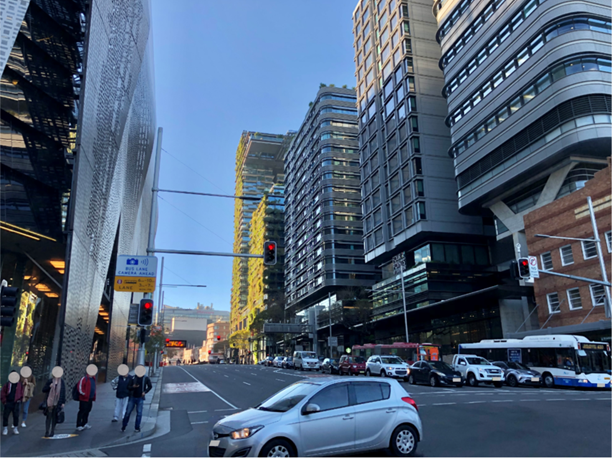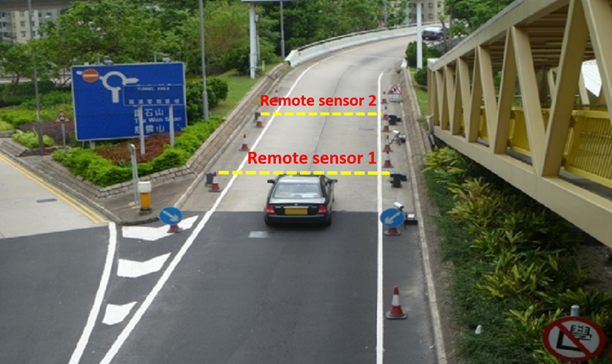Air pollution continues to be a major health hazard to the public worldwide. The World Health Organization (WHO) estimated that 91% of the world population were living in places where air quality levels exceed WHO limits.
Meanwhile, many countries, especially developing countries, are rapidly becoming urbanized. In 2018, 55% of the global population lived in cities, and this percentage is projected to reach 68% by 2050. Therefore, it is of great significance to monitor the urban air quality to protect public health.
What impact can the poisonous gasses in car exhaust fumes have on individuals?
Although many sources contribute to urban air pollution, road transport is believed to be the single largest source of air pollutants. Car exhaust gases contain a number of harmful emissions, such as carbon monoxide (CO), hydrocarbons (HC), nitrogen oxides (NOx) and particulate matter (PM). These emissions are very toxic and carcinogenic to humans, with PM being the most closely associated with increased cancer risks, especially lung cancer. Some people are more sensitive to air pollution than others, such as children, seniors, pregnant women and those with heart and lung conditions.

Figure 1: Vehicle emissions are major sources of urban air pollution and pose serious health risks to the public due to their close proximity to people.
Why is it so challenging, with current technology, to determine whether a vehicle is high-emitting or not?
The biggest challenge when it comes to determining whether a vehicle is high-emitting is associated with the costs and resources required to screen out the high-emitting vehicles.
The conventional method is to test a vehicle using a chassis dynamometer in a laboratory, which requires significant time, manpower and costs for each vehicle. Although laboratory emission testing is highly accurate, such a method is not feasible for a city-wide program, as there are so many vehicles in one city. For example, Sydney had over 5 million registered vehicles in 2021.
In addition to costs, laboratory testing is also not convenient for vehicle owners as they have to drive their vehicles to a designated test center. On the other hand, on-road remote sensing technology provides a rapid, non-invasive, in-situ, and cost-effective method to measure the emission levels of on-road vehicles when they pass by a measurement site.
According to your research, a large proportion of petrol and LPG vehicles fail to meet emission standards. Why is this, and how can remote sensing (RS) be employed to help address these issues?
Our research showed that 13% and 63% of the petrol cars and LPG taxis failed their respective emission standards in Hong Kong, and older vehicles are more likely to fail the standards. The failure rate for taxis is significantly higher because of their heavy operation. Taxis could easily accumulate a mileage of over 100,000 km per year. Thus their emission control systems could quickly deteriorate and fail from new.
Therefore, remote sensing technology is used on Hong Kong roads to continuously monitor their emission levels and screen out high-emitting vehicles for targeted emission control.
It should be noted that significant preparation was conducted before the introduction of the remote sensing high-emitter enforcement program.
Firstly, training workshops were offered to the automotive industry groups and repair associations. Such workshops provided the industry with the essential knowledge in repairing high-emitting vehicles that would be detected by remote sensing.
Secondly, a one-off subsidized replacement program was offered to the LPG taxis and minibusses to replace their three-way catalysts and oxygen sensors. This was to ease the resistance and concern from the LPG fleet owners because a large percentage of these vehicles were high-emitters.
Can you provide an overview of how your on-road RS technology can rapidly and accurately identify high-emitting vehicles?
On-road remote sensing only takes about half a second to measure the emissions of a vehicle when it passes by a measurement site. Both the emissions (CO, HC and NO) and license plate number of the passing vehicle are measured. The license plate number is used to obtain the registration information of the passing vehicle, such as its fuel type, vehicle class and emission standard, which are then used to look up the high-emitter cut points.
The measured emissions are compared with the cut points to determine whether the passing vehicle is high-emitting or not. Remote sensing systems are mobile and are deployed at different locations in the city to achieve as comprehensive coverage as possible.
To ensure detection accuracy, a dual remote sensing method is adopted, which means a vehicle is measured twice when it passes by the measurement site. Only those with two consecutive readings exceeding the cut points are considered high emitters, which may fail only one pollutant or multiple pollutants simultaneously. An additional quality assurance measure is to only use measurements under moderate speed and acceleration conditions to avoid off-cycle high emission events.
The owners of high-emitting vehicles identified by remote sensing are notified with emission test notices (ETNs). The owners are required to repair and test/retest their vehicles at a designated vehicle emission test center within 12 workdays. High-emitting vehicles that do not take or pass the tests within the 12-day limit will be delicensed and removed from roads.

Figure 2: Typical setup of an on-road remote sensing measurement site.
How did you assess the efficacy of your RS technology, and what were the results?
During the development of the high-emitter enforcement program, a double-blind test on 34 petrol and LPG vehicles was conducted using a dual remote sensing method and chassis dynamometer test. We found zero false positives, whereas the percentage of the false negatives was 40%. This is because the remote sensing cut points are conservatively defined to achieve zero false positives but not to avoid zero false negatives, which is critical for a government enforcement program.
Please note that an ideal zero-error cut point is not possible because of the snapshot measurement nature of remote sensing and the high variations of instantaneous real-driving emissions. Trade-offs have to be made between missing true high emitters (i.e., false negatives) and avoiding false high emitters (i.e., false positives).
In the actual implementation of the enforcement program in Hong Kong, the high-emitting vehicles detected by remote sensing are required to conduct a laboratory cycle test using transient chassis dynamometers to officially examine and confirm their emission status. The results show that the remote sensing method is very accurate and effective.
How does RS technology compare to other methods of vehicle emission measurement?
The most popular and mature methods for vehicle emission measurements are chassis dynamometers in the laboratory and portable emission measurement systems (PEMS) in the real world. Compared to these, remote sensing technology offers several advantages.
The major advantage of remote sensing is its ability to rapidly measure a large number of vehicles under real-world driving conditions at a relatively low cost. Remote sensing can measure the emissions of a vehicle in less than 1 second, and a time interval of 4 seconds between two vehicles will have insignificant interference on the measurements. Typically, about 70–80% of the measurements are valid after eliminating the invalid gas measurements and unreadable and out-of-date license plates. Therefore thousands of valid measurements can be taken at one site per day.
Moreover, remote sensing is the most economical emission testing method based on a cost-per-vehicle.
Finally, remote sensing measures vehicle emissions under real driving conditions and does not interfere with normal driving.
Of course, remote sensing has some disadvantages compared to chassis dynamometers and PEMS. Firstly, as an indirect measurement, remote sensing can only measure the emission ratios of pollutants over carbon dioxide. These emission ratios can be converted to absolute emission concentrations and emission factors under specific assumptions.
Secondly, remote sensing only measures a vehicle in less than 1 second under one engine condition, which cannot fully or accurately represent the emission level of a vehicle. Finally, the accuracy of remote sensing is relatively lower.
Aside from its environmental benefits, what other advantages does this novel technology offer?
Remote sensing technology also offers economic and social benefits. Our study showed that engine faults not only increased pollutant emissions but also deteriorated the vehicle fuel economy and drivability. Therefore, this technology could help the high-emitting vehicle owners to better maintain their vehicles, which helps reduce their fuel costs and improve the drivability performance.
Finally, it can also help vehicle owners detect premature failures of their vehicles for early rectification to prevent major failures and thus improve driving safety.
Did you come across any challenges during your research, and if so, how did you overcome them?
Controlling the emissions from in-use vehicles is a multidisciplinary problem that involves complex policy and technical considerations. Fortunately, I received strong support from many wonderful people from different backgrounds, especially my colleagues at the University of Technology Sydney (UTS) and my collaborators at the Hong Kong Environmental Protection Department (HKEPD) and the Hong Kong Jockey Club Heavy Vehicle Emissions Testing and Research Centre (JCEC).
What impact will such a novel process have on the environment and society as a whole?
As demonstrated in our study, significant percentages of in-use petrol and LPG vehicles failed the emission standards, particularly the high-mileage fleets. The remote sensing enforcement program greatly cleaned these fleets. Air quality monitoring stations showed obviously improved roadside air quality after implementing the enforcement program. This should greatly help protect public health as urban streets are important outdoor spaces for city inhabitants.
What are the next steps for your research?
The current remote sensing high-emitter enforcement program only covers petrol and LPG vehicles, while diesel vehicles are not covered, which are major contributors to NOx and PM emissions. Therefore, our future research will aim to develop more accurate remote sensing systems and methods so that remote sensing can be used for all the vehicles running on roads.
About Dr. Yuhan Huang
 Dr. Yuhan Huang received his BEng degree from the Huazhong University of Science and Technology (HUST) in China in 2011 and a Ph.D. degree from the University of Technology Sydney (UTS) in Australia in 2017. After his Ph.D., Dr. Huang joined UTS as a Postdoctoral Research Fellow from 2017 to 2021. Meanwhile, he was also a Visiting Research Fellow at the Jockey Club Heavy Vehicle Emissions Testing and Research Centre in Hong Kong from 2017 to 2020. Currently, he has been a Chancellor’s Postdoctoral Research Fellow at UTS since 2022. Recently, he received an ARC DECRA fellowship at The University of Sydney.
Dr. Yuhan Huang received his BEng degree from the Huazhong University of Science and Technology (HUST) in China in 2011 and a Ph.D. degree from the University of Technology Sydney (UTS) in Australia in 2017. After his Ph.D., Dr. Huang joined UTS as a Postdoctoral Research Fellow from 2017 to 2021. Meanwhile, he was also a Visiting Research Fellow at the Jockey Club Heavy Vehicle Emissions Testing and Research Centre in Hong Kong from 2017 to 2020. Currently, he has been a Chancellor’s Postdoctoral Research Fellow at UTS since 2022. Recently, he received an ARC DECRA fellowship at The University of Sydney.
Dr. Huang’s research interests include computational fluid dynamics, vehicle emissions, pollutant dispersion, urban air quality, and renewable fuels. He has published over 40 papers in the leading journals in his field, such as Nature Sustainability, Science Advances, Renewable & Sustainable Energy Reviews, and Environmental Pollution. In addition, he is currently a Guest Editor of Environmental Research, Energies and Atmosphere. He has led or participated in 13 research projects, in total accounting for over AU$2M, such as ARC DECRA in Australia and RGC, ITF and ECF in Hong Kong, China.
Disclaimer: The views expressed here are those of the interviewee and do not necessarily represent the views of AZoM.com Limited (T/A) AZoNetwork, the owner and operator of this website. This disclaimer forms part of the Terms and Conditions of use of this website.